I'm so sorry if this is a stupid question. I have read some of the questions previously asked but in afraid the maths and physics are way over my head.
I have made a wooden template and would like it to have light up eyes. I am hoping to use 1.5 V AA battery to power them. The eyes will be initially yellow LEDs. I don't want to fry them so if I wanted to power two separate 'eyes' which I believe are 2.1 V each, what resistor would I need to add to my circuit please? In the future, I may want to use other colours which are different voltages so if anyone can explain how to work this out in dummy terminology I would be incredibly grateful. Also, does it make any difference to the equation if you change the amount of LEDs being powered?
